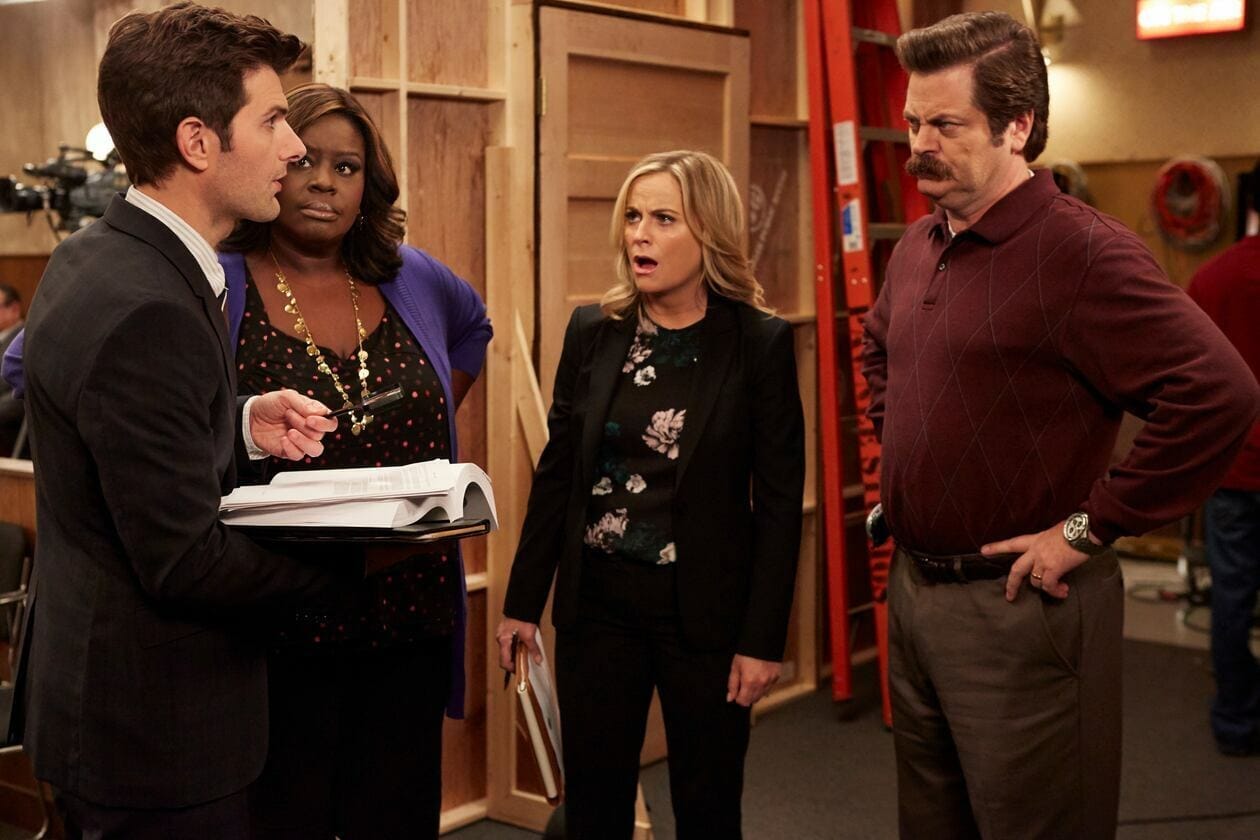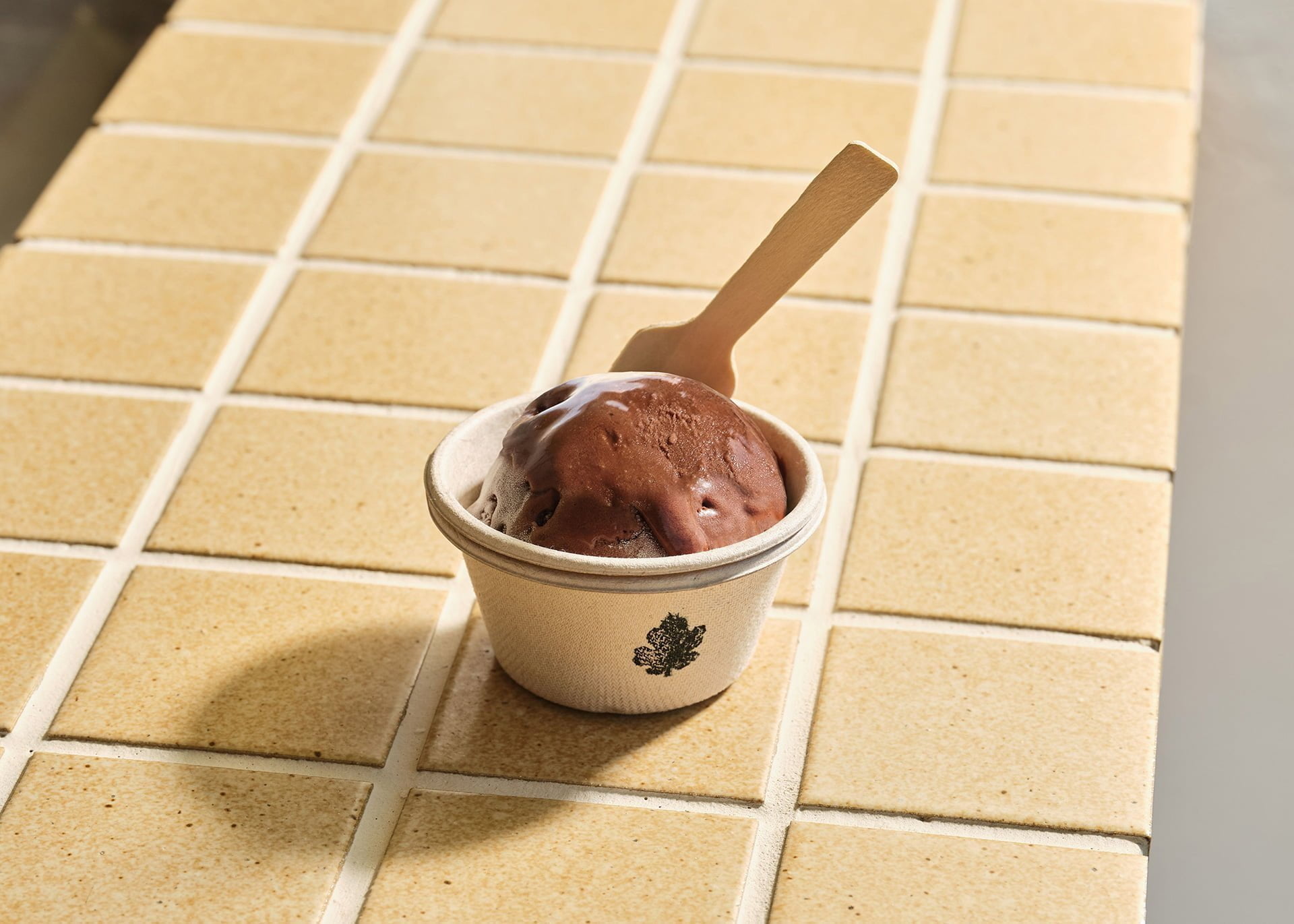Our favourite sweet snack comes at a cost to the planet. Read all about the carbon footprint of chocolate.
It’s rare to meet someone who doesn’t like chocolate. The world gets through eight million tons of the stuff every year. But what impact does our favourite snack have on the climate? We dug into the data to find out.
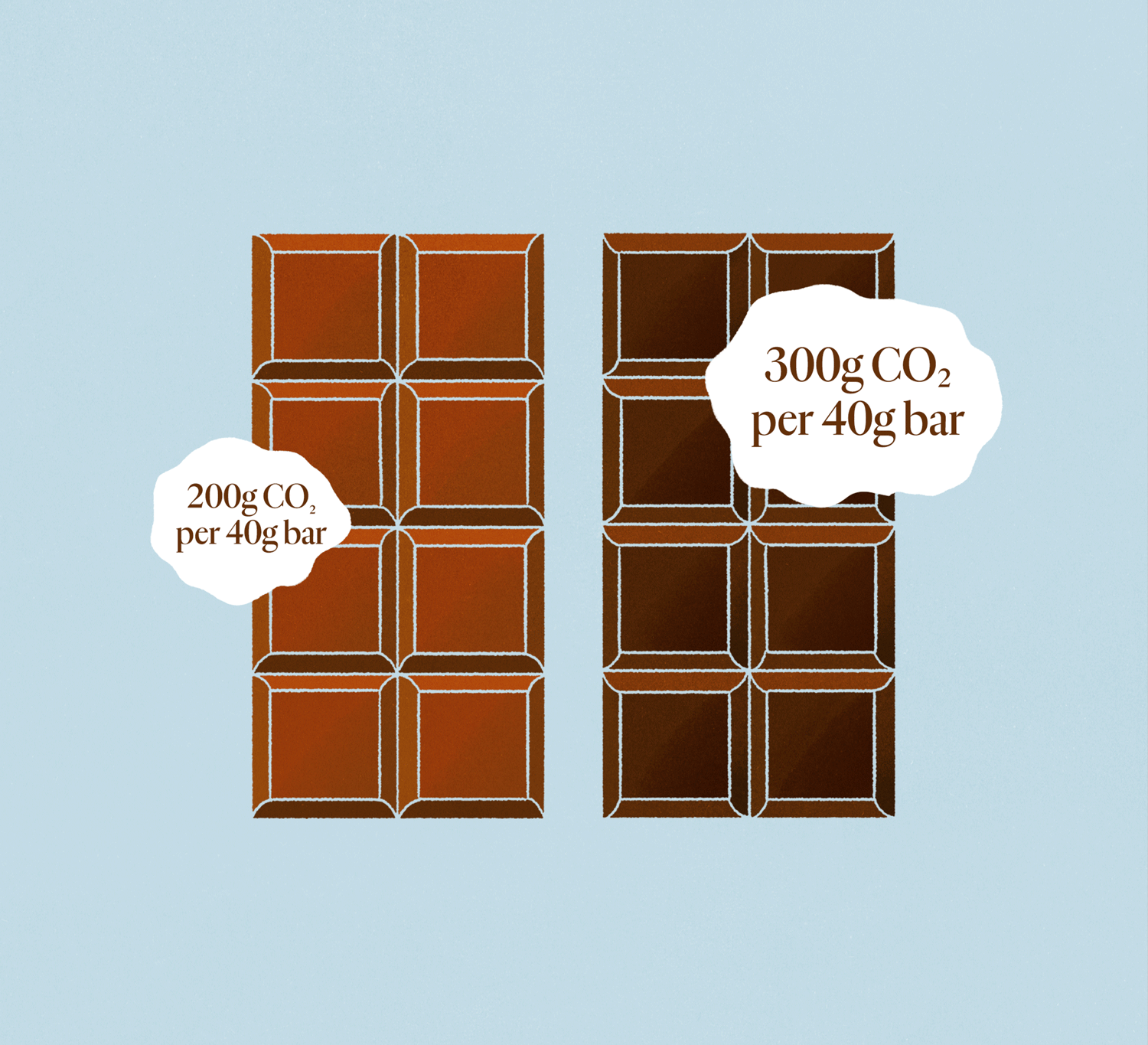
Did you know that milk and dark chocolate have a different carbon footprint?
The carbon footprint of chocolate
A 2019 study from the University of Edinburgh in the UK estimated that a milk chocolate bar causes 200g of carbon dioxide (the most common of the so-called ‘greenhouse gases’ that cause the planet to overheat), while a dark chocolate bar causes 300g. That means that compared to a healthier snack such as, say, a banana, the impact of chocolate on our climate is a whopping six to nine times higher, gram for gram.
So why does chocolate have such a big footprint? Well, most of chocolate’s greenhouse gas emissions come from producing cocoa and milk. One of the biggest problems is that the land used to farm cocoa in West Africa is often cleared by cutting down forest (deforestation), which otherwise would have absorbed pollution from the air, helping to slow down climate change.
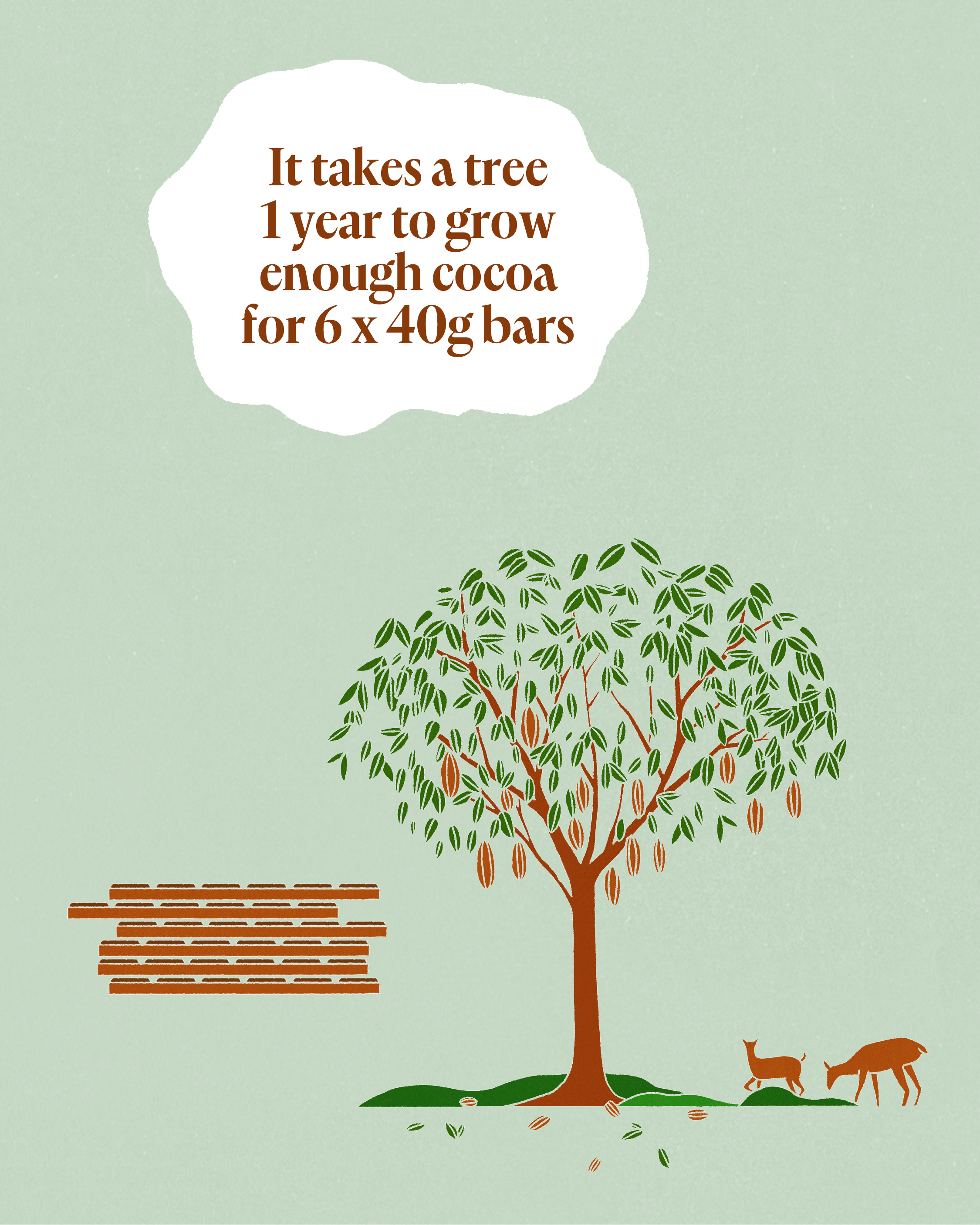
The average cocoa pod contains 30 to 40 beans, which need to be picked, roasted and ground before being made into chocolate.
Part of chocolate’s footprint of the chocolate comes from all that pollution that the cleared trees didn’t get a chance to absorb. Companies that sell chocolate in Europe will have to be more careful about this from the end of 2024, when a new rule comes into force requiring sellers to make sure their products are deforestation-free.
Then there’s the milk. To make milk, you have to grow plants and feed them to cows, which then burp out methane – a gas that’s even worse for the atmosphere than carbon dioxide. Land may be cleared for cattle farming too, so that’s more deforestation. Making chocolate also requires large amounts of water, meaning further impact on the environment in the places where it is made.
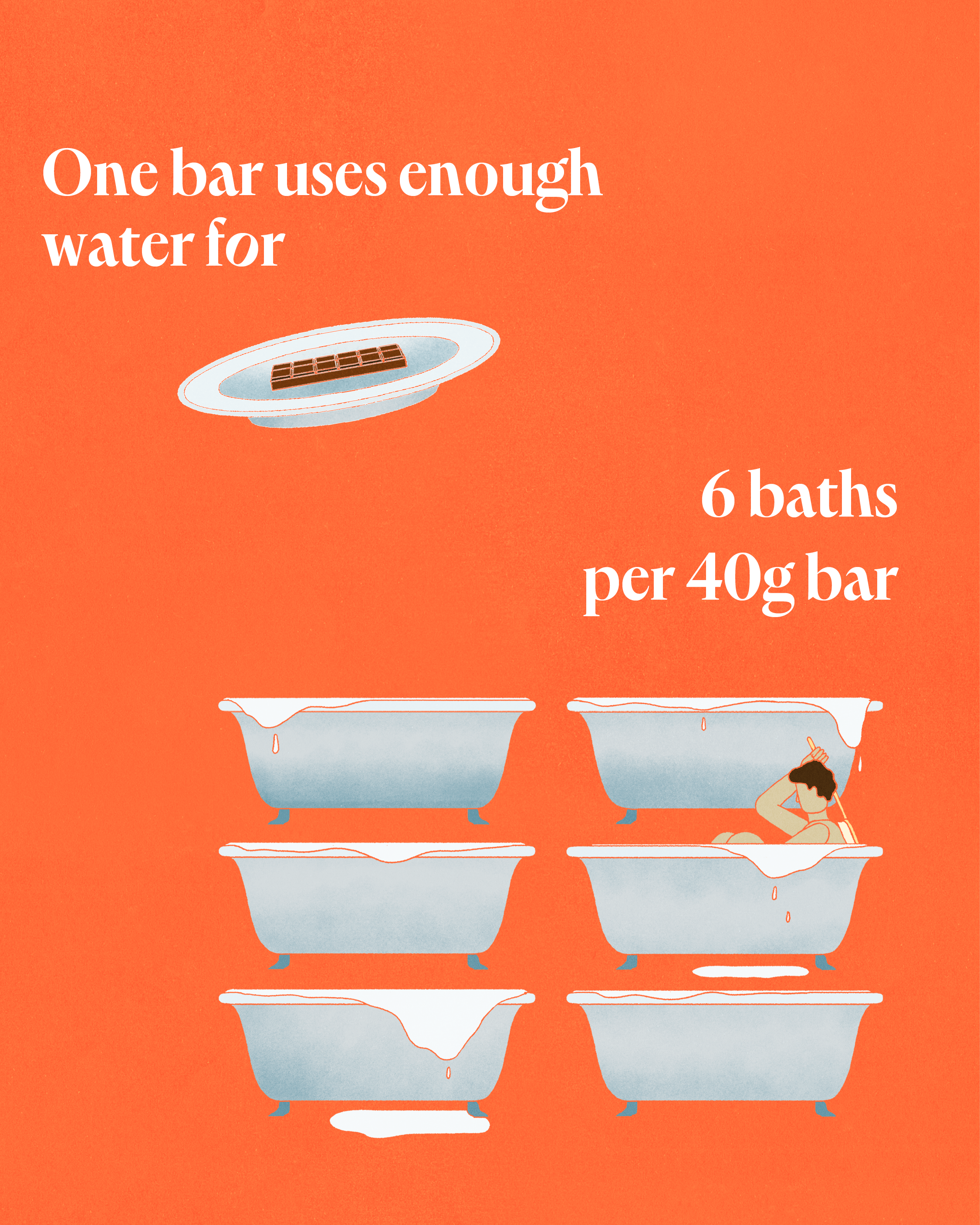
What would you choose: a single sweet or a week’s worth of tub time?
Everything we eat has some kind of impact on the environment (food accounts for about a quarter of the pollution that causes climate change), and not every chocolate bar is the same, so the exact footprint depends on how the ingredients are farmed. But – and we hate to be the bearer of bad news – chocolate is up there with meat and cheese as one of the foods with the biggest impact on our climate.
Of course, we can’t talk about the impact of the chocolate trade on the planet without also talking about how it affects people. Most of the world’s cocoa is grown on small family farms in West Africa. Child labour is a big problem. Fair trade and other initiatives are trying to make sure that workers are being properly treated, and farmers get a fair price, but it’s a long way from perfect.
As if this wasn’t important enough already, it turns out that what works for people also works for the planet. This is because, when cocoa farmers can make a good living, they’re under less pressure to clear trees to make space for more crops. In this way, fair trade helps to tackle both poverty and deforestation.
We’re able to tell stories like this because of people like you. Join others from around the world in supporting Imagine5’s mission towards a sustainable future. Become a member, or donate what you can. Join today and receive our latest magazine for free.
What can you do?
- Choose brands that commit to protecting forests – such as those with products and ingredients certified by the Rainforest Alliance.
- Choose brands that trade fairly with cocoa farmers. Farmers who can earn a good living don’t need to resort to deforestation.
- Try vegan milk chocolate. Its footprint is smaller, because plant milk creates less emissions than cow’s milk.
- Snack in moderation!
Food
The future of food
Culture for climate
